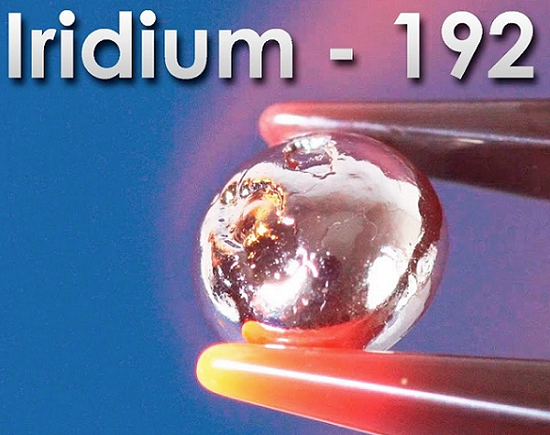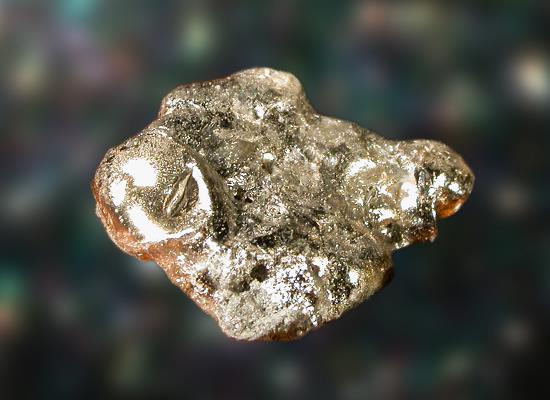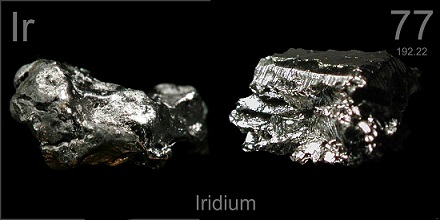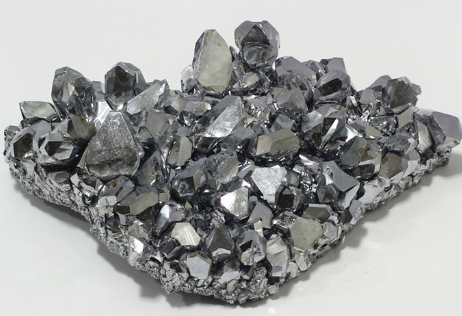Where does Iridium Come From? Extra-terrestrial or Volcanic?
Iridium is one of the nine least abundant stable elements in the Earth's crust, having an average concentration of 0.001 ppm in crustal rock. In contrast to its low abundance in crustal rock, iridium is comparatively common in meteorites, with concentrations of 0.5 ppm or higher.
In the Earth's crust, iridium is observed at highest concentrations in three different types of geological structures: igneous deposits (crustal intrusions from below), impact craters, and deposits reworked from one of the former structures. The largest known primary reserves are found in the Bushveld igneous complex in South Africa, (near the largest known impact crater, the Vredefort crater) although the large CuNi ore deposits near Norilsk in Russia, and the Sudbury Basin (also an impact crater) in Canada contain also substantial reserves of Ir. Smaller reserves are found in the United States. In addition, Ir can be found in secondary deposits, combined with Pt and other Pt-group elements in alluvial deposits. The alluvial deposits used by pre-Columbian people in the Choco´Department of Colombia even today produce Pt-group metals.
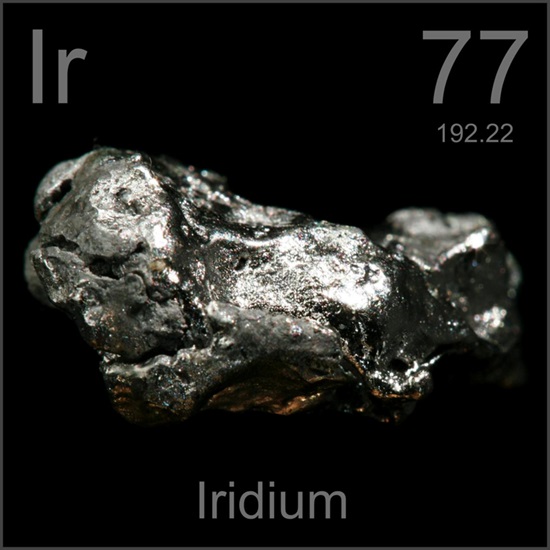
Extra-terrestrial
The boundary between the Cretaceous and Paleogene 66 million years ago has been identified by a thin stratum of Ir-rich clay. A research team led by Luis Alvarez and his son Walter proposed in 1980 an extra-terrestrial origin for this iridium, ascribing it to an asteroid or comet impact. Their theory, known as the Alvarez hypothesis, is now generally recognized to explain the extinction of the nonavian dinosaurs. A large buried impact crater structure with an estimated age of about 66 million years was later discovered under what is currently the Yucata´n Peninsula, Mexico (the Chicxulub crater).
Volcanic
Others though claim that the Ir could have been of volcanic origin instead, as the Earth's core is rich in iridium, and active volcanoes such as Piton de la Fournaise, on the island of Re´union, are still releasing Ir.
The overall concentration of iridium on Earth is believed to be much higher than what is found in crustal rocks, but because of the density and siderophilic ("iron-loving") character of iridium, it has accumulated below the crust in the Earth’s core when the planet was still molten. Ir is found in nature as a native element and in natural alloys; in particular the IrOs alloys, osmiridium (Os rich), and iridosmium (Ir rich). In the Ni and Cu deposits, the platinum group metals can be found as sulfides (i.e., (Pt,Pd)S), tellurides (i.e., PtBiTe), antimonides (PdSb), and arsenides (i.e. PtAs2). In all these compounds, platinum is substituted by a minor amount of Ir and Os. As with all the platinum group elements, Ir occurs naturally in alloys with raw Ni or Cu. Several Ir-dominant minerals, with Ir as the species-forming element, are known. They are extremely rare and frequently embody the Ir equivalents of the above-given minerals. Some examples are irarsite ((Ir,Ru,Rh,Pt)AsS) and cuproiridsite ((Cu,Fe)Ir2S4).
You may like
Related articles And Qustion
See also
Lastest Price from Iridium manufacturers

US $1.00/KG2025-04-21
- CAS:
- 7439-88-5
- Min. Order:
- 1KG
- Purity:
- 99%
- Supply Ability:
- 300kg
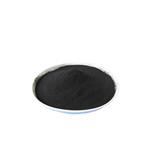
US $10.00/g2024-11-07
- CAS:
- 7439-88-5
- Min. Order:
- 1g
- Purity:
- 99.95%
- Supply Ability:
- 200000

